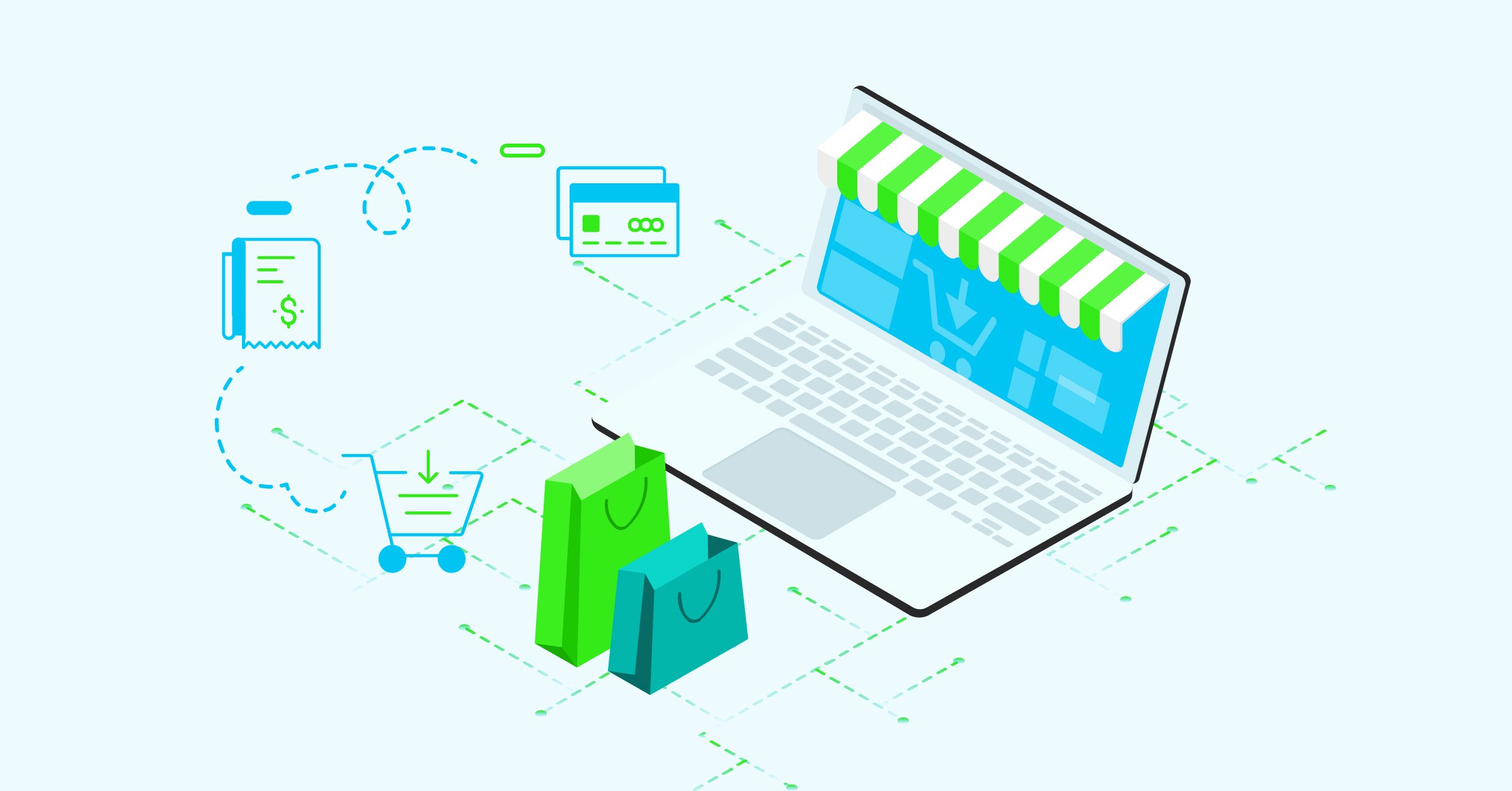Note: This is part 1 in our series of posts about how Syndigo’s futuristic approach to its architecture benefits our customers.
Primitive digital commerce systems were designed for primitive commerce
Historically, digital commerce systems existed as isolated monoliths in the systems landscape of businesses selling products or services. Not only did all the required data exist within these systems, but they also provided all the essential capabilities – calculating prices, discounts, some features to enrich your product data, some minor Content Management System (CMS) capabilities, and so on. The front-end (the customer-facing interface) and back-end (the server, database, and business logic) of the system were tightly integrated.
The integration between e-commerce and other systems was also primitive. There was no way of verifying accuracy and consistency – whether the system was checking that the inventory was correct or that the price was the same in other channels, etc. All channels operated independently of each other. It was a true landscape of several different monolithic systems which were more or less out of sync.
Evolution was driven by customer preferences
However, as consumers began demanding better experiences, vendors had to adapt. Consumers demanded better content, and better product information but more simply, better incentives to be loyal to the business. This created the need to better communicate between systems (and channels). For example, it became necessary to have one system to calculate that customer-specific price – for all channels! It became necessary to get the precise number of items on hand before placing the order. It became necessary to process the order immediately in the underlying Order Management System(OMS), whether that was a big monolithic ERP or a separate OMS system.
As web technologies advanced, APIs (Application Programming Interfaces) became more prevalent. APIs allowed for better data exchange and integration between different systems. E-commerce platforms began to offer APIs to enable third-party developers to create custom front-ends or integrate with other systems.
This was a true step forward and a true driver for the next shift within e-commerce – moving between cross-channel or multi-channel and towards omnichannel. It was an important milestone toward creating a more coherent customer experience over all channels. But the other, bigger driver toward evolution was the sheer scale, size, and speed of data. Legacy systems were just not built to handle requests of the magnitude we see today. There was a growing demand for more flexible and customizable e-commerce experiences.
Headless commerce was the next step in this evolution of digital commerce.
A brief analogy to describe headless architecture
A simple way to think of headless is to think of a scenario where you need groceries delivered to you. You probably have an app where you select a few items and a few minutes later they show up at your doorstep. But what happens when you click that button? You need two things to happen – someone to walk through the store and shop for your groceries and someone to drive from the store to your house and deliver them.
You can think of one version of this process where both the shopper and the driver are the same person.
But imagine if they weren’t. You’d be able to get the best shopper to do the shopping and the best driver to do the driving. If your driver had to move or quit, you could replace that driver and have your shopper hand off the groceries to the new driver seamlessly.
That’s headless architecture in a nutshell. refers to a modern approach to e-commerce architecture where the front-end (the customer-facing interface) and back-end (database, business logic and logistics) of an online store are loosely coupled or separated. This decoupling allows for greater flexibility, scalability, and customization in delivering digital shopping experiences.
This separation was achieved using APIs, which allowed for the development of custom front-ends using various technologies like JavaScript frameworks (e.g., React, Vue.js) or mobile apps and facilitating the communication and data exchange between the front-end and back-end components.
How Syndigo PIM operationalizes headless architecture
In any PIM system, you have expectations of a few key functions.
- The system needs to be able to define the nature of the data (the schema).
- It needs to be able to onboard the data and store it.
- The user should be able to run a search on the data.
- The system should be able to validate the data – check it for completeness and accuracy.
- Content enrichment, through automation if possible
- Syndication?
The traditional way to offer these functions is to have them all baked into a single app that would serve the end-to-end needs of the user. At first glance, this method appears to suffice. But as new technologies and processes are developed, any updates to the app would require a massive, expensive overhaul. The entire application would have to be rewritten just to upgrade the search capability. And later again when there’s a better way to enrich content. And then once more when there’s another improvement in the search function.
Instead, Syndigo’s approach to PIM is to offer these services as modules that are connected through APIs. This way, when there is a need or desire to improve the way a search function is run, only that module would need to get updated. The rest of the application remains untouched. This way, the user is always offered the best possible configuration of this application.
Even outside of the PIM itself, the customer benefits from the flexibility to configure their e-commerce landscape as a whole due to the loose coupling with the PIM. Updates to the data models in the PIM can flow upstream or downstream through model change interfaces. Changes to the e-commerce pricing engine or web interface can be done without worrying about changes to the entire tech stack like you would have to with a monolithic vendor. Syndigo’s approach delivers our customers a best-in-breed PIM for their commerce needs and ensures that they are able to adjust and improve their technology as needed with minimal disruptions. Contact us to learn more about how Syndigo’s headless approach to PIM can help you not only streamline your PIM functionalities but also empower you to adapt and thrive in an ever-evolving digital marketplace








